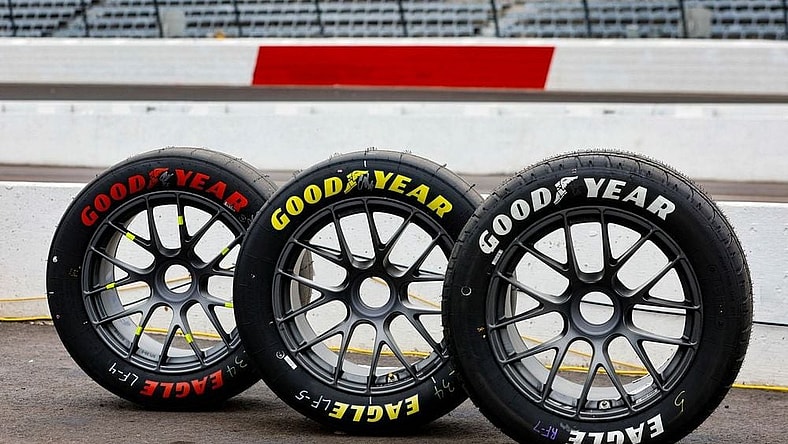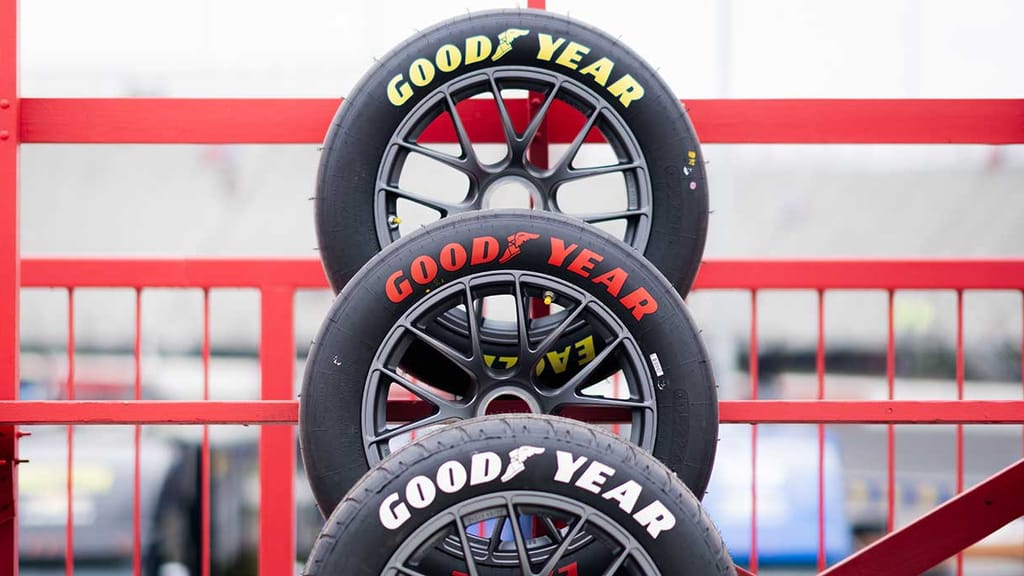
One of the biggest impediments to the current on-track NASCAR product is that drivers have access to data to allow each other to mimic the best driving styles, all while driving identical cars.
In other words, if every car is virtually the same and so too are the drivers, how is anyone supposed to pass beyond pit road? That’s not as true on intermediate tracks, which boasts multiple lanes and more opportunities for divergence, but not viable on short tracks and road courses.
After trying a variety of aerodynamic packages, including a lift splitter, over the past three years to improve the product on these types of tracks, the unexpected results of the spring race at Bristol forced the sanctioning body to pivot towards tire management as a point of disparity.
NASCAR has worked towards two different aims with tires this summer — producing more falloff to create speed disparity or forcing it through two different compounds that can be swapped back-and-forth over the course of a race.
The latter was tried in May during the All-Star Race at North Wilkesboro but it did not produce the intended results due to its freshly repaved characteristics and the race taking place at night in cooler conditions.
NASCAR will try again, this time during a points paying race, next month at extremely abrasive Richmond Raceway with the exact same tire compounds — primary left-side D-5208 and right-side D-5220 plus option left-side D-5224 and right-side D-5226.
While the decision to pursue this has been met with praise, there is also concern from racers that the option tires will wear out to quickly and rendering them useless over green flag runs greater than 15-20 laps. In that scenario, teams would just wait and save them for a late caution, at which point everyone is still running the same speeds.
So, in the eyes of NASCAR senior vice president of competition Elton Sawyer, what would make this a success?
“When you look at the All-Star Race, and after the test, we anticipated more falloff, but as the race went into the night and it got cooler, we didn’t see what we wanted,” Sawyer said on Tuesday during a midweek media availability at NASCAR Studios. “We took those tires to Iowa and the options didn’t last 15 laps.
“TBD on what this looks like at Richmond because it’s much faster, not as fast as Iowa, but in that same ballpark so we’ll know more after practice and looking forward to that 45-minute practice session, to have a better idea of what the falloff looks like.”
In other words, NASCAR and Goodyear really isn’t sure but that is the point of trying this now, in one of the final races before the playoffs begin. It’s another data point as NASCAR continues to work towards improving its short track product.

“When you look at the schedule, Richmond just gave us the next opportunity because we had this on our plate when we left North Wilkesboro,” Sawyer said. “We wanted to try this in a points paying race and Richmond was that first opportunity.”
Ultimately, NASCAR is just trying to gather as many data points as possible for ways to improve the short track product.
There is a test going on at Bristol on Tuesday, not using the option tire, but Goodyear is certainly trying its best to replicate what happened in the spring again in the summer, which might be more challenging due to its summertime conditions.
NASCAR and Goodyear hopes to continue pursuing softer tire compounds in general too, anything to put more into the drivers’ hands and increase passing opportunities on flatter, one groove tracks.
“We’re passionate about making our short track package better,” Sawyer said. “Tires have proven to do that at Bristol because drivers had to manage it.
“We’re looking for something similar to that, not wearing out in 10-12 laps but something drivers have to manage similar to when we started the spring race at Richmond on the wet weather tires and cars were all over the track, top and bottom, and that gave us encouragement that this will give us what we’re looking for.”
Matt Weaver is a Motorsports Insider for Sportsnaut. Follow him on Twitter.